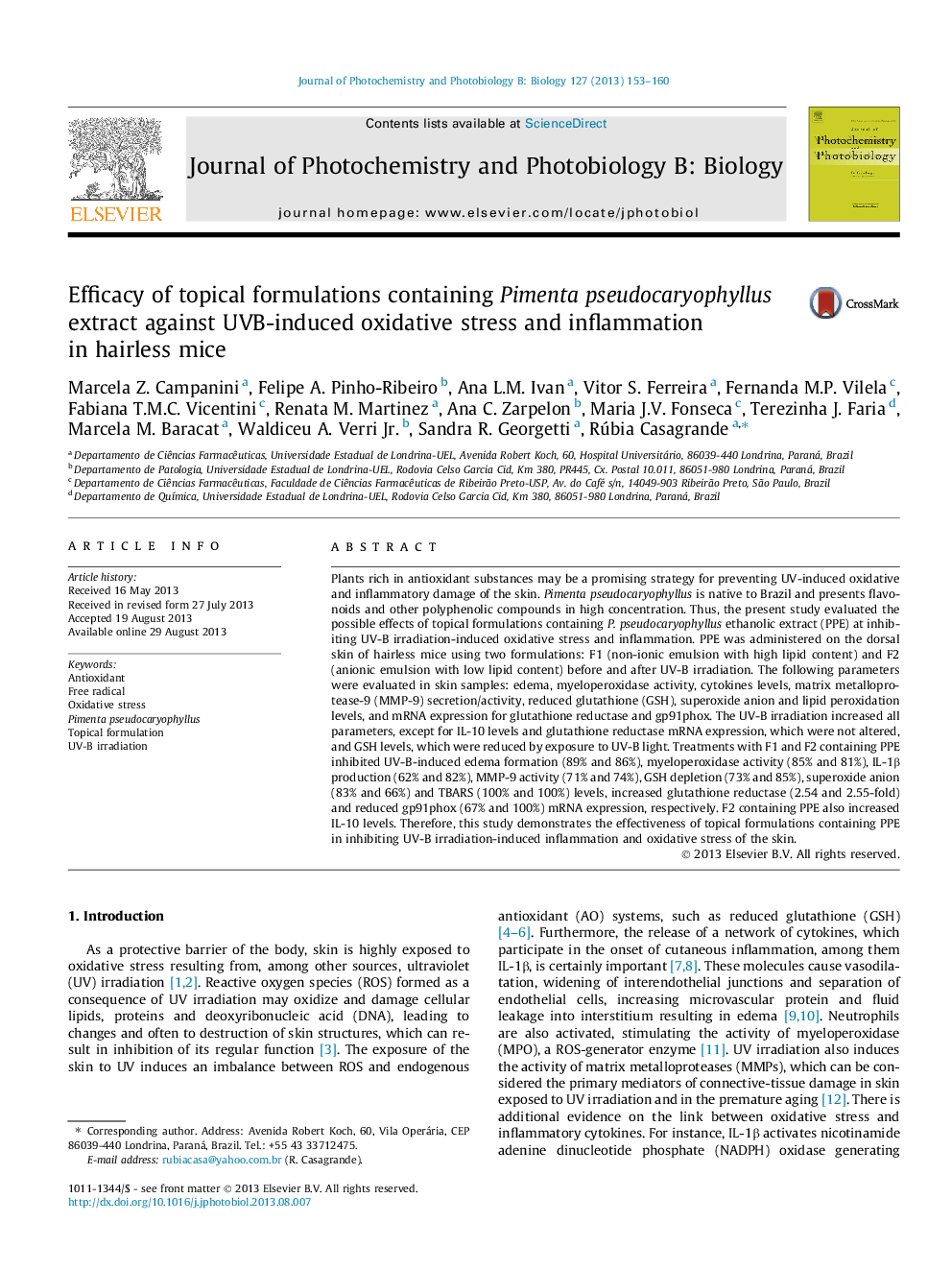| Article ID | Journal | Published Year | Pages | File Type |
|---|---|---|---|---|
| 30335 | Journal of Photochemistry and Photobiology B: Biology | 2013 | 8 Pages |
•Topical formulations with Pimenta pseudocaryophyllus ethanolic extract (PPE) were developed.•PPE formulations reduced UV-B-induced oxidative and inflammatory skin damages.•PPE formulations inhibited skin edema, MPO and MMP-9 activity.•Superoxide anion, gp91phox expression, lipid peroxidation and IL-1β production were inhibited.•GSH, glutathione reductase expression and IL-10 levels were increased.
Plants rich in antioxidant substances may be a promising strategy for preventing UV-induced oxidative and inflammatory damage of the skin. Pimenta pseudocaryophyllus is native to Brazil and presents flavonoids and other polyphenolic compounds in high concentration. Thus, the present study evaluated the possible effects of topical formulations containing P. pseudocaryophyllus ethanolic extract (PPE) at inhibiting UV-B irradiation-induced oxidative stress and inflammation. PPE was administered on the dorsal skin of hairless mice using two formulations: F1 (non-ionic emulsion with high lipid content) and F2 (anionic emulsion with low lipid content) before and after UV-B irradiation. The following parameters were evaluated in skin samples: edema, myeloperoxidase activity, cytokines levels, matrix metalloprotease-9 (MMP-9) secretion/activity, reduced glutathione (GSH), superoxide anion and lipid peroxidation levels, and mRNA expression for glutathione reductase and gp91phox. The UV-B irradiation increased all parameters, except for IL-10 levels and glutathione reductase mRNA expression, which were not altered, and GSH levels, which were reduced by exposure to UV-B light. Treatments with F1 and F2 containing PPE inhibited UV-B-induced edema formation (89% and 86%), myeloperoxidase activity (85% and 81%), IL-1β production (62% and 82%), MMP-9 activity (71% and 74%), GSH depletion (73% and 85%), superoxide anion (83% and 66%) and TBARS (100% and 100%) levels, increased glutathione reductase (2.54 and 2.55-fold) and reduced gp91phox (67% and 100%) mRNA expression, respectively. F2 containing PPE also increased IL-10 levels. Therefore, this study demonstrates the effectiveness of topical formulations containing PPE in inhibiting UV-B irradiation-induced inflammation and oxidative stress of the skin.
